Kumano Kodo is a network of thousand-year-old roads that pilgrims use to travel from various parts of Japan to visit Kumano Sanzan in Wakayama Prefecture, three of the most sacred shrines (Kumano Hayatama Taisha, Kumano Nachi Taisha, and Kumano Hongu Taisha). These roads and the sacred places they connect have been listed as UNESCO World Heritage Sites since 2004.
The Iseji Road, which runs through Mie Prefecture, is a 170km, two-week walk from the Ise Grand Shrine to the Kumano Sanzan Shrines. It passes through deep forests and beaches with sacred rocks along the Pacific Ocean, the beauty of which reminds us that in Shintoism, the gods reside in all elements of nature.
If you don’t have enough time to embark on a two-week walk, don’t worry! I’ll take you to the most striking places in Iseji that can be reached within a day.
- Matsumoto-toge pass
- Onigajo cave
- Shishi-iwa Lion Rock
- Hananoiwaya Shrine
- Maruyama Senmaida Rice Terraces
Matsumoto-Toge Pass
I suggest you start with a short hike over the Matsumoto-toge pass (松本峠道). There are two possible routes: across the pass to Kumanoshi town to the south or down east to the lava coast of Onigajo.
It takes about ten minutes to get to the path from Odomari station. As soon as you start walking, you will enter deep into the forest. The roots of the giant cedars intertwine with the stones paving the path. The road was paved during the Edo period as more and more pilgrims came to walk the paths leading to the summit. Further on, the landscape changes, and the vegetation becomes more diverse.
After 40 minutes, you come to a small shrine in a bamboo forest. Here, you can choose to continue straight to Kumano or take the path to the ruins of Onigajo Castle.
Even if you choose the former, I recommend that you follow the road to the ruins for even a few minutes. You will come to a hut with a great view of Shichirimihama beach. You can then retrace your steps and continue towards Kumano. It takes about 50 minutes to walk through the forest. Once out of the woods, it is another 40 minutes to Kumanoshi station, passing a few souvenir shops and restaurants on the way.
I continued on the road towards the ruins of Onigajo, about a half-hour walk. Once at the top, I could enjoy several viewpoints on the coast. To the east, one overlooks a garden planted with cherry trees down to a lava cave and bearing the same name as the castle. I walked through it to get back down, but since I was travelling in autumn, the branches of the cherry trees were already bare. I imagined how beautiful the view must have been through the flowering trees in spring!
Onigajo Cave
The rock formations on the coast here result from lava flows that formed over a kilometre long, 14 million years ago. Over time, as the ground rose, they appeared on the surface in breathtaking shapes. It is a collection of natural works of art, and if you look at them, it is easy to understand why people of old times saw divine apparitions in these places. The Onigajo Cave (鬼ヶ城) is one of these many works of art. The name comes from a legend about a dangerous pirate who made this cave his hideout. With the help of the goddess Kannon herself, the shogun Sakanoue no Tamuramaro reached the cave and fought the pirate, who released 800 oni demons from the cliffs, which the shogun’s arrows defeated.
The name Onigajo means the castle of the ogre (or demon), which was also given to the castle above the Matsumoto-toge pass.
You will pass the Onigajo Centre, which is primarily a restaurant, before walking down to a cave formed under the cliff from the car park. The path runs along with the rock formation and into a rock passage, which appears to have been built by human hands. We also passed several other rocks, among which are sacred rocks. One of them has an astonishing shape, reminiscent of Totoro! You can walk freely in the cave, which is not very deep and opens onto a large expanse of rocks that form a sort of raised beach.
Shishi-iwa Lion Rock
A little further down the coast, about ten minutes by bus, is another breathtakingly shaped rock: Shishi-iwa (獅子岩), which literally translates as “lion rock.” You must have seen these legendary lions with curly manes guarding the entrance to some shrines. The Shishi-iwa looks like one of these creatures with its open mouth. Like the Onigajo cave, this rock was formed under the sea before it appeared on the surface. Sitting on the beach, facing the sea, the lion seems to be the guardian of this place.
Hananoiwaya Shrine
It takes no more than a 10-minute walk to get to the Hananoiwaya Shrine (花の窟神社) from the Shishi-iwa. I particularly like visiting this type of shrine: ancient, sober, which imbues you with the original philosophy of Shintoism. This one is built around a huge rock that houses the deity Izanami no Mikoto.
It looks modest at first glance, but it is one of the oldest shrines on the Japanese island. For some, it may even be the first shrine of Japan. It is mentioned in the Nihon Shoki (日本書紀), the oldest collection of texts found in Japan, dating back to the 8th century, which tells the story of the origin of Japan. The rock is 45 metres high and 80 metres wide and is both the tomb and sacred refuge of the goddess. Izanami no Mikoto is one of the first Japanese deities credited with creating the islands that make up Japan. As I approached the rock, I saw that many people had placed small white pebbles inside the holes in the rock. One of the visitors explained to me that this was a way of symbolising the wishes placed in the goddess’s hands.
At the entrance to the shrine, there is a room filled with seasonal flowers and flower artworks donated by pilgrims. The shrine’s name, Hananoiwaya (花の窟 ), means “the flower cave.” This name mentioned in the Nihon Shoki refers to a legend about the two creator deities of Japan: Izanagi and Izanami. Izanami died during the birth of Kagutsuchi. In a rage, Izanagi killed Kagutsuchi and buried his companion in the village of Arima. The villagers then began to place flowers on her grave, giving birth to the Hananoiwaya shrine.
If you look up from under the rock, you can see a rope that connects it to a huge tree opposite. On this rope are tied several other ropes hanging in the air. Twice a year, a festival is held during which a ritual is performed to replace them with new ropes. It takes place every year without exception, on February 2nd, to pray for a good harvest, and on October 2nd, for thanksgiving. The faithful gather a few days earlier to weave the 170 metres of rope needed.
The Terraces of the Thousand Rice Fields of Maruyama
After marvelling at all these natural and sacred places, let me now take you to another aspect of the Kumano Mountains. The Maruyama rice terraces owe their beauty to the legacy of centuries-old farming practices. Maruyama Senmaida (丸山千枚田, literally “the thousand rice fields of Maruyama”) consisted of 2,200 rice fields in the 17th century. However, as the rural exodus considerably reduced the number of farmers in the area, only 530 rice fields were left in the early 1990s. Today, thanks to local partnerships and an ownership programme, there are 1,340 rice fields under cultivation.
The easiest way to get there from Kumanoshi station is by car. But if you depend on public transport, you can take a bus to the foot of the rice fields. It takes about half an hour to get to the top of the rice fields, following the paths that run between the different plots. On the other hand, if you are traveling by car, you can access the rice fields via Route 40 and thus begin your visit at the top by going down along the rice fields.
In general, visitors prefer to come in the spring, when the fields are flooded with water, and the sky is reflected in them. But it would be a shame not to visit if you are in the area at any other time, especially as each season brings its own unique touch to the landscape. In summer, the rice stalks grow, and from a distance, the terraces look like a giant mosaic with countless shades of green. In early autumn, the rice begins to turn yellow until it is harvested. In winter, snow covers the whole landscape. I visited this place in early November, after the harvest. For once, I hoped it would rain so I could see the sky reflected in the rice fields. When I arrived there, at about 16:00, the sun was flooding the landscape, which was more colourful than I could have imagined.
Access Information
All visits on this itinerary are entirely free of charge. If you want to enjoy your stay without luggage, you can leave your luggage at the tourist office in front of Kumano-shi station for free. If you’re going to take advantage of the fresh Pacific air and scenery to go for a bike ride, the same tourist office offers bikes for rent.
For the Iseji part of the tour (Matsumoto-toge, Onigajo, Shishi-iwa and Hananoiwaya), all locations are within 10km of each other and are served by bus. Be sure to check the timetable in advance as they do not always run frequently.
Check the city bus timetable at the Kumamo City website.
How to Get to Matsumoto-toge Pass
Accessible on foot from JR Odomari Station (about 10 minutes). Accessible by car from the Odamari car park (free), just cross the elevated pedestrian crossing to get to the forest entrance. If you are driving, you can also park in the Onigajo car park (free), which is actually at the arrival point, towards the castle ruins. From the car park, walk up to the Odamari car park and cross the raised pedestrian crossing to reach the entrance to the forest. This way, you can go to the cave at the end and leave directly from there to continue the tour to the southwest.
How to Get to Onigajo Cave
Accessible by bus from Kumanoshi Station by taking the Mie Kotsu public bus, line B or D. Get off at the “Onigajo east exit” stop. By car, you can park in the free Onigajo car park.
Open to the public daily from 9:00 to 17:00.
How to Get to Shishi-iwa Lion Rock
Accessible from Onigajo Cave in 15 minutes by bus on line 13, or in 20 minutes by Mie Kotsu public buses, line B or D. Get off at the Shishiiwa bus stop. Open daily.
How to Get to Hananoiwaya Shrine
You can walk from Shishi-iwa in about 8 minutes. By car, you can park for free in front of the shrine. Open daily from 9:00 to 16:00.
How to Get to Maruyama Senmaida Rice Terraces
From Kumanoshi station, you can take a city bus, line A, and get off at the “Senmaida tori-toge iriguchi” stop (about 1 hour). Please note that there are only four bus trips in a day. A longer route is available eight times a day. You can also take the line 13 bus from Kumanoshi to Atawa Hashiji and change to the city bus line E to “Senmaida tori-toge iriguchi” (1 hour and 30 minutes). Open daily.
The diversity of the landscapes and the richness of their history make this trip a unique experience to get acquainted with the traditions and spiritual practices of the country. It is the beauty of the places and all the beliefs attached to them that make this trip a rich and profound experience.
Article written in partnership with Mie Prefecture

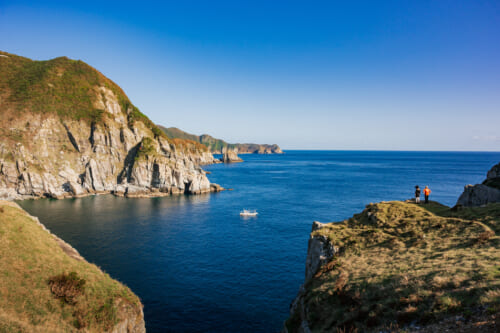
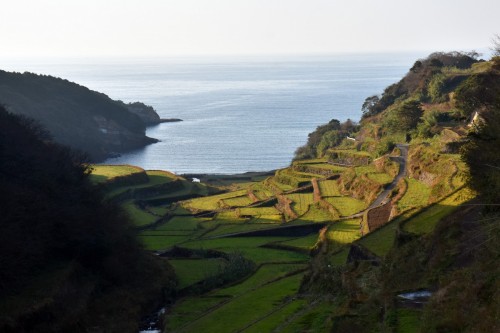
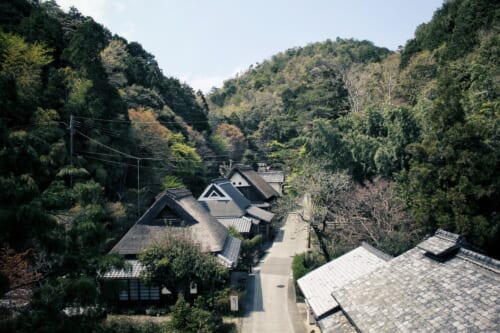
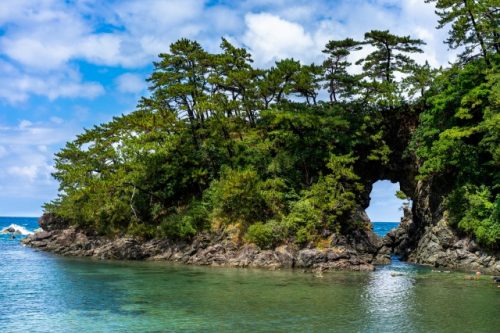
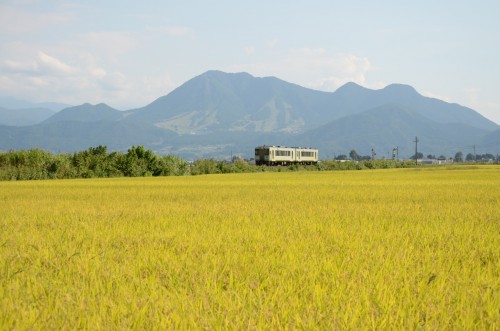


No Comments yet!